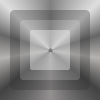Well yeah, the message is telling you just how to fix this!busywait wrote:It also works in SAVIHost, but seems a bit stuttery, and has a message at the bottom that says "Low frame rate. Set your hosts buffer to <1700 samples (40mS)"
I didn't notice any difference between the CPU load of the SpiralCM and Spiral (mono): both pretty low CPU.
Err.. what? The gain is pretty essential, and has nothing to do with the volume gain, so you might want to change the visualisation gain even if the sound volume is just fine.busywait wrote:Why don't I want gain? Because my gain is set up rightIf it isn't I'll adjust the controls in the DAW.
Actually gain in the plugin could be useful, but IMO, SpiralCM is a thing of simple and functional beauty, but Spiral risks looking too big, confusing, and complicated. Features vs Complexity trade off.
Anywho I just don't get why you care if there are controls you don't use, whereas I care if I have to go through some menu or popup just to access something that could be right there. I'm against the Google kind of minimalism, you know, removing as many features as possible and hiding the rest into some button's menu's submenu's dialog's tab. If it can all fit all at once on the screen then that's the way I want it




